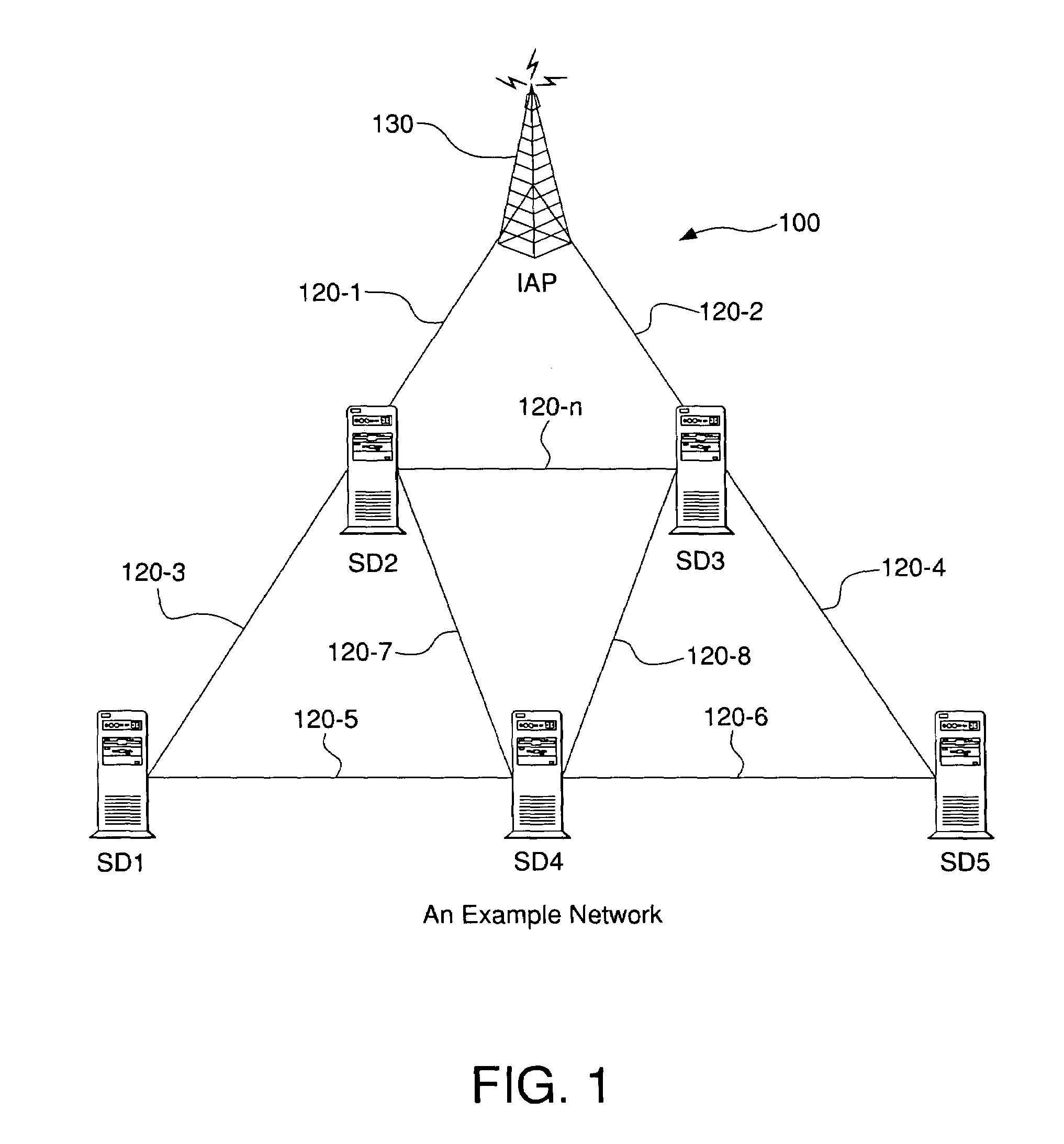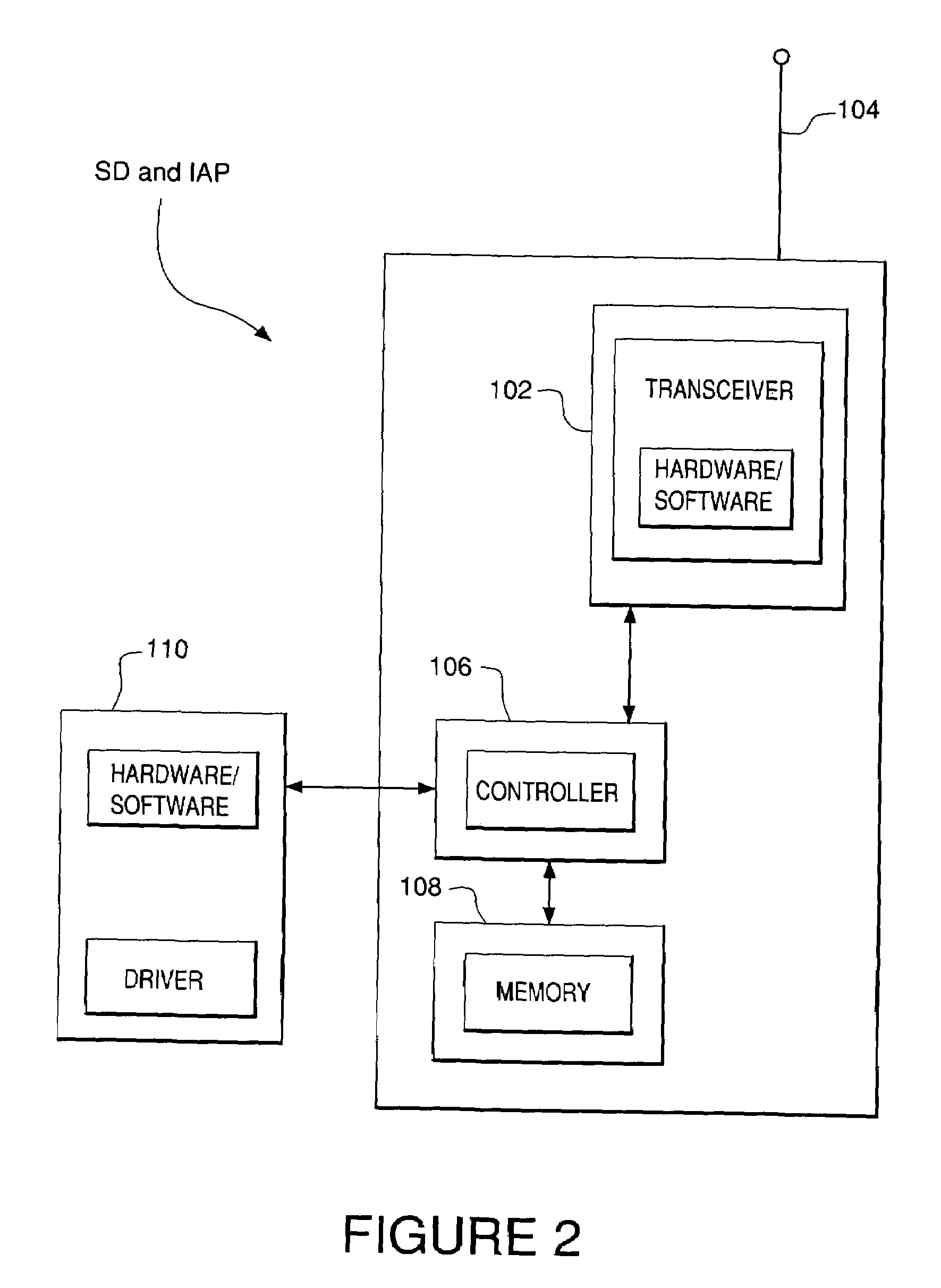System and method for decreasing latency in locating routes between nodes in a wireless communication network
- Summary
- Abstract
- Description
- Claims
- Application Information
AI Technical Summary
Benefits of technology
Problems solved by technology
Method used
Image
Examples
Embodiment Construction
[0022]The embodiments of the present invention described below improves the system performance of a wireless network by controlling the dissemination of Routing packets and decreasing the latency in finding routes. In doing so, each embodiment serves to eliminate the need to keep large buffers in each Subscriber Device (SD).
[0023]As noted above, wireless networks frequently use On-Demand protocols (e.g. AODV (RFC 3561), DSR (Internet Draft), and so forth) as the routing protocol. Typically the Route Discovery involves broadcasting and forwarding of RREQ packets until the route is found. All the application packets generated in the mean time are buffered at the source node and there typically is a large latency associated with this route discovery if the destination is several hops away. The embodiments described below include a system and method to discover the routes to the destination in an efficient way and also decrease the latency involved in finding the route.
[0024]As describe...
PUM
 Login to View More
Login to View More Abstract
Description
Claims
Application Information
 Login to View More
Login to View More - R&D
- Intellectual Property
- Life Sciences
- Materials
- Tech Scout
- Unparalleled Data Quality
- Higher Quality Content
- 60% Fewer Hallucinations
Browse by: Latest US Patents, China's latest patents, Technical Efficacy Thesaurus, Application Domain, Technology Topic, Popular Technical Reports.
© 2025 PatSnap. All rights reserved.Legal|Privacy policy|Modern Slavery Act Transparency Statement|Sitemap|About US| Contact US: help@patsnap.com



